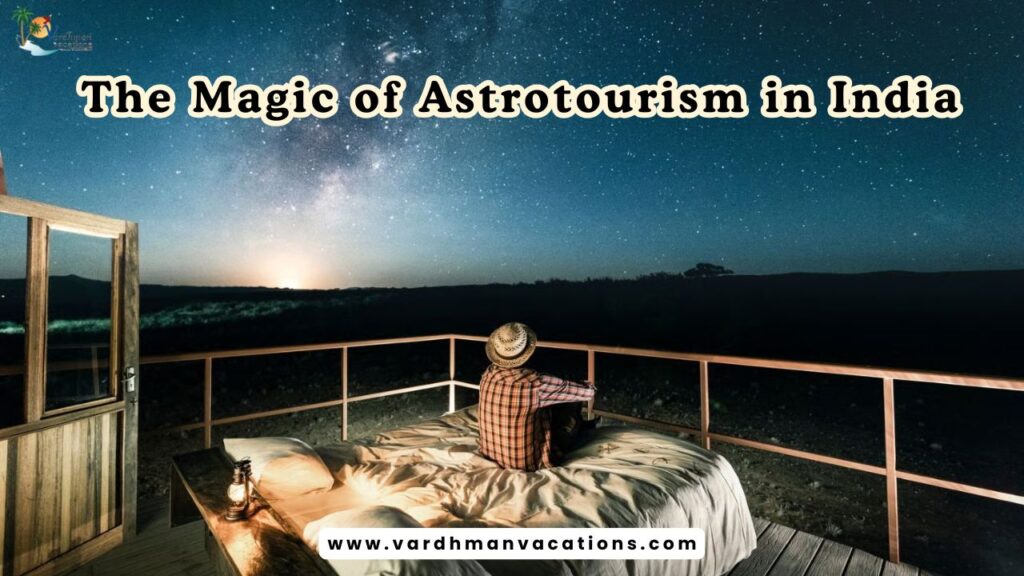As ancient as Hinduism and Buddhism, Jainism—also known as Jain Dharma—is one of India’s oldest religions. All three faiths share the belief in reincarnation, and Jains follow the path shown by the 24 Tirthankaras (spiritual teachers), especially the last one, Lord Vardhamana Mahavira.
The foundation of Jainism rests on two guiding principles: Ahimsa (non-violence) and respect for all living beings, including plants and animals. Because of this, followers of Jainism are strict vegetarians.
The Jain community is mainly divided into two sects—Śvētāmbara and Digambara. While both uphold the same fundamental beliefs and vows, their practices and interpretations differ in certain aspects.
Rather than diving deep into the philosophy, this article focuses on something different—the global presence of Jains. I was curious to learn about the Jain population outside India, and my research revealed some fascinating insights that I’m excited to share.
Within India, Jain communities thrive across major states and cities such as Delhi, Gujarat, Rajasthan, Madhya Pradesh, Maharashtra, Tamil Nadu, Kerala, and Karnataka, among others. But the good news is that Jainism is no longer confined to India—it has spread its roots worldwide through migration and cultural exchange.
Here’s a look at some of the countries where Jainism has found a home beyond India:
United States of America

After India, the United States is home to the second-largest Jain community in the world. The journey of Jainism in America began in 1893, when Virachand Gandhi represented the religion at the Parliament of the World’s Religions in Chicago—marking a historic moment for global recognition of Jain philosophy.
Today, there are over 100 Jain centers and around 25 Jain temples spread across the country. These centers are not just places of worship—they serve as community hubs that include temples, libraries, meeting halls, guest accommodations, and spaces for cultural and spiritual gatherings.
It is estimated that there are nearly 200,000 Jains living in the United States, actively preserving their traditions while sharing the timeless principles of non-violence, truth, and compassion with the wider world.
Kenya
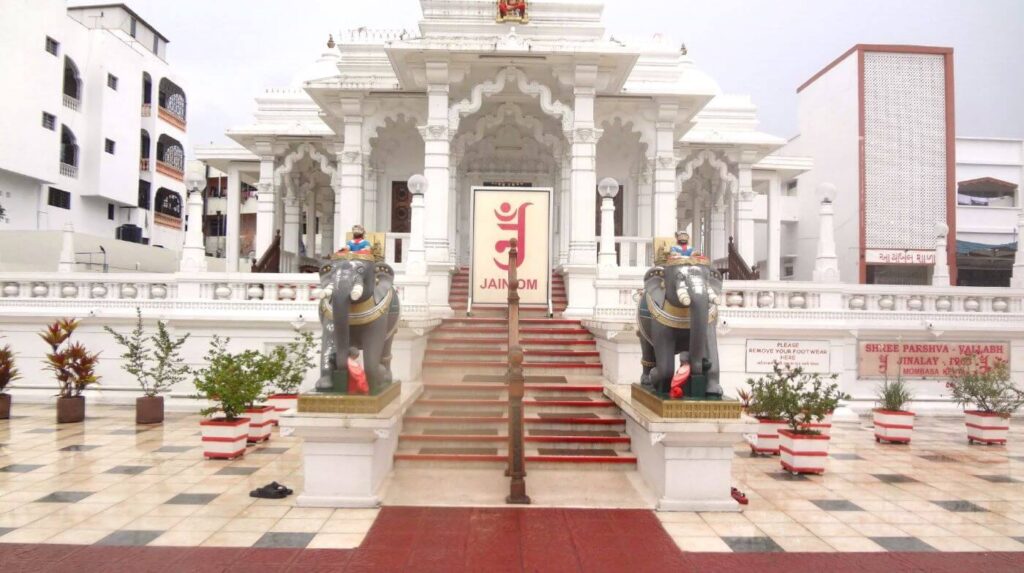
Jainism has flourished in Kenya for nearly a century, establishing a vibrant and respected community. The country is home to around 69,000 Jains, primarily concentrated in the major cities of Nairobi and Mombasa.
The arrival of Jainism in Kenya dates back to the 19th century, when Indian Jains migrated to East Africa in search of trade and business opportunities. Over time, they not only built temples and community centers but also became some of the most successful entrepreneurs and philanthropists in the region.
Today, the Jain community in Kenya continues to uphold its religious traditions, contributing significantly to the nation’s economic and social development while promoting the timeless Jain values of peace, integrity, and non-violence.
United Kingdom

The United Kingdom is home to the largest Jain population in Europe, with an estimated 35,000 followers as of 2016. The roots of Jainism in the UK trace back to 1892, when Champat Rai Jain, a religious scholar, arrived in England to study law. His efforts laid the foundation for Jainism’s presence in the country.
In 1930, he established the first Jain library in the UK, marking a significant milestone in promoting Jain literature and philosophy abroad. Today, there are about nine Jain centers and temples across the country, serving as important hubs for worship, education, and cultural gatherings.
Another landmark development came in 1986 with the founding of the Institute of Jainology (IOJ) in London—a registered charitable trust dedicated to advancing Jain studies and preserving the faith’s heritage. Through these initiatives, the Jain community in the UK continues to uphold and spread the principles of Ahimsa (non-violence) and spiritual harmony across Europe.
Japan

In recent years, Japan has witnessed a growing interest in Jainism, especially among followers of Zen Buddhism, a school of Mahayana Buddhism. Many Japanese seekers are drawn to the simplicity, discipline, and non-violent philosophy of Jain Dharma.
A remarkable story that inspired this movement began in 2005 with a Japanese woman named Churushi Miyazawa. After meeting Gachadhipati Swargiya Jayantsen Suriswarji Maharaj Saheb in Gujarat, she immersed herself deeply in Jain teachings, renouncing material comforts to live a minimalist, spiritual life. She later took the name Tulsi, and under her Guruji’s guidance, she was entrusted with the mission of spreading Jainism in Japan.
Since then, Tulsi has introduced hundreds of Japanese devotees each year to Jain pilgrimage sites in Tharad, Palitana, and Shankheshwar. Her followers practice the principles of Jain living—wearing simple white attire, chanting the Navkar Mantra, eating Satvik food before sunset, drinking warm water, meditating in Derasars (Jain temples), and observing the 8-day festival of Paryushan through fasting and prayer.
What began in Naganoken, a small town in Japan, has now spread to major cities like Tokyo and Osaka. To date, over 5,000 Japanese families have embraced Jainism, and there are currently three Jain temples in Japan, standing as symbols of peace, purity, and devotion.
Canada

Canada is home to a vibrant and steadily growing Jain community, with an estimated 12,000 to 15,000 followers spread across cities such as Toronto, Vancouver, Calgary, Ottawa, and Montreal. The arrival of Jain families began in the late 20th century, as professionals and students from India migrated seeking education and career opportunities, bringing with them their rich spiritual heritage.
Over time, Jains in Canada have built strong community networks, leading to the establishment of several Jain associations and temples. The most notable among them is the Jain Society of Toronto (JSOT), which manages one of the largest Jain centers in North America. The temple complex serves as a hub for worship, study, cultural programs, and charity events.
Canadian Jains actively celebrate major festivals such as Mahavir Jayanti, Paryushan, and Diwali, with participation from both Shwetambara and Digambara traditions. Despite living far from their homeland, they continue to preserve the core principles of Jainism—non-violence, compassion, truth, and simplicity—while contributing meaningfully to Canadian multicultural society.
The growing presence of Jains in Canada stands as a testament to how ancient Indian wisdom can harmoniously blend with modern global life, inspiring both devotees and admirers alike.
Belgium
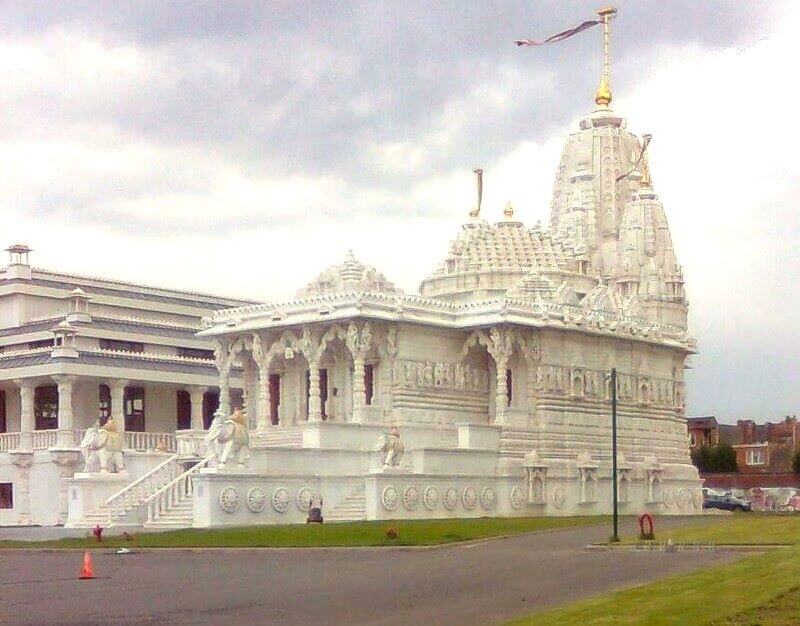
Although Belgium has a relatively small Jain population—around 1,500 people—the community holds a distinctive presence, particularly in the city of Antwerp, where most Jains are settled. Many of them are deeply involved in the diamond trading industry, which has strong historical ties to the Jain community.
Despite their limited numbers, the Jains in Belgium have established two beautiful Jain temples and cultural centers—one in Antwerp and another in Wilrijk. These temples serve as peaceful sanctuaries for worship and community gatherings, reflecting the intricate artistry and spiritual depth characteristic of Jain architecture.
Though Belgium may have one of the smallest Jain populations in Europe, its temples—especially the one in Antwerp—stand as radiant symbols of faith, devotion, and cultural pride, drawing admiration from both locals and visitors alike.
Australia

Jainism has been steadily growing in Australia over the past few decades, largely due to the migration of Indian professionals, students, and business families. Today, there are an estimated 4,000 to 5,000 Jains living across major cities such as Sydney, Melbourne, Perth, Brisbane, and Adelaide.
The first organized Jain community in Australia began forming in the late 20th century, and with time, several Jain associations were established to promote religious teachings, cultural values, and community welfare. The Federation of Jain Associations of Australia (FOJAA) and local organizations like the Jain Society of Victoria and the Sydney Jain Mandal play key roles in uniting followers.
Although Australia does not yet have large temple complexes like in India, Jain centers and Derasars have been developed in cities such as Melbourne and Sydney, where devotees gather regularly for prayers, lectures, and celebrations of important festivals like Mahavir Jayanti and Paryushan Parva.
The Jain community in Australia, though small, continues to grow—preserving its traditions while embracing modern life, and spreading the timeless messages of Ahimsa (non-violence), truth, and spiritual balance across the continent.
Hong Kong

Hong Kong is home to one of the oldest Jain communities outside India, with its roots tracing back to the early 20th century. The first Jains arrived here as traders and jewelers from Gujarat and Rajasthan, drawn by Hong Kong’s position as a global business hub. Today, the Jain community numbers around 3,000 to 4,000 people, many of whom are well-established in the diamond, jewelry, and textile industries.
Despite being a small community, the Jains of Hong Kong have preserved their traditions beautifully. The city is home to the magnificent Jain Derasar in Tsim Sha Tsui, built in classic white marble and adorned with intricate carvings. This temple serves as both a place of worship and a cultural center, where devotees gather for prayers, lectures, and festivals like Paryushan, Mahavir Jayanti, and Diwali.
The Jain community here is known for its philanthropy and cultural engagement, supporting charitable causes and interfaith harmony. Their efforts ensure that Jainism’s timeless teachings of Ahimsa (non-violence), Aparigraha (non-possessiveness), and Satya (truth) continue to shine brightly—even amid the fast-paced urban life of Hong Kong.
Malaysia
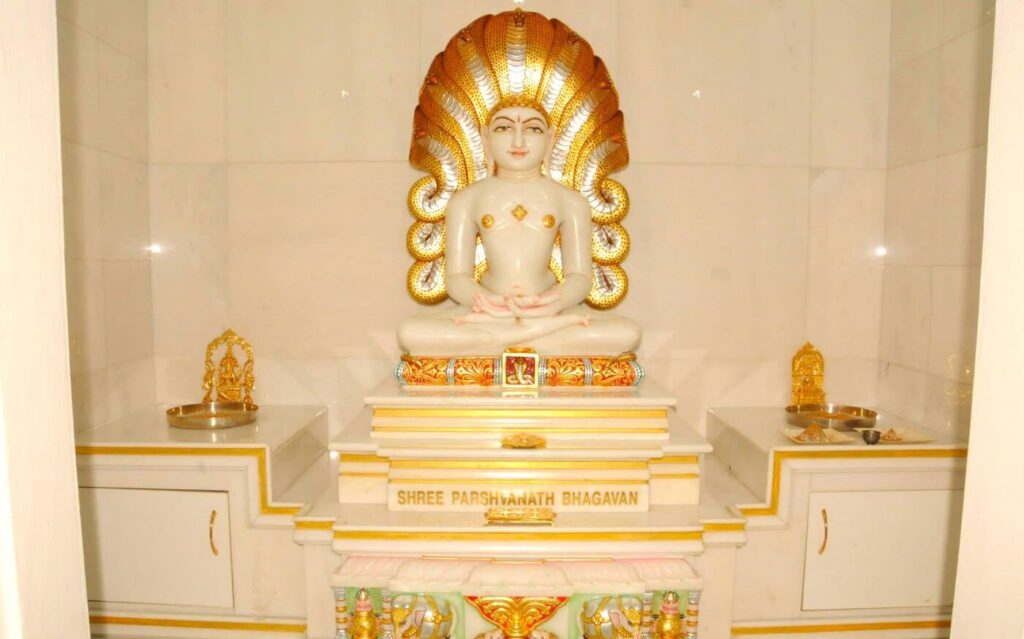
Jainism in Malaysia has a modest yet deeply rooted presence, with the community tracing its origins back to Indian traders who migrated during the British colonial era. Today, there are around 2,000 to 3,000 Jains living mainly in Kuala Lumpur, Penang, and Johor Bahru.
Most Malaysian Jains belong to business families engaged in trading, jewelry, and textiles, and they have maintained their faith with great devotion despite being far from their homeland. The community’s spiritual and social activities are coordinated through organizations such as the Malaysian Jain Sangh, which plays an important role in promoting Jain culture, organizing religious events, and supporting humanitarian causes.
In Kuala Lumpur, a beautiful Jain Derasar (temple) serves as the focal point for worship and community gatherings. Here, devotees come together to celebrate major Jain festivals like Mahavir Jayanti, Paryushan Parva, and Diwali, with collective prayers, discourses, and traditional rituals.
Although small in number, the Jain community in Malaysia is a shining example of resilience and unity, upholding the timeless values of Ahimsa (non-violence), truth, and spiritual simplicity in a multicultural environment that embraces harmony and coexistence.
Singapore
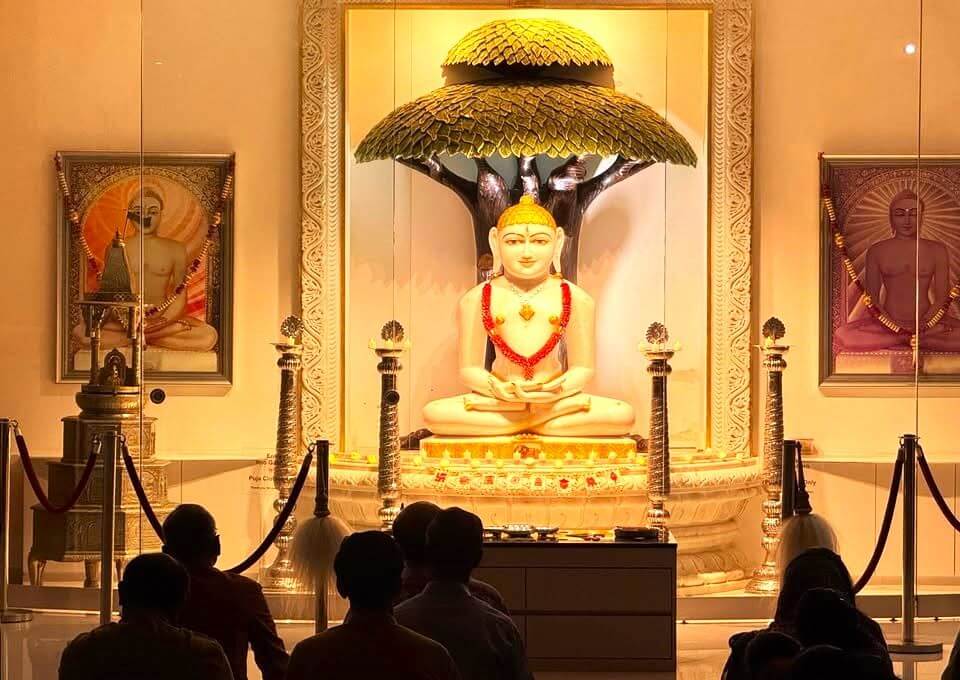
Singapore is home to a thriving Jain community that has been part of the island nation’s cultural fabric for over a century. The first Jains arrived in the early 20th century from Gujarat and Rajasthan, primarily as traders and entrepreneurs. Today, the community has grown to around 3,000 to 4,000 members, making it one of the most active Jain populations in Southeast Asia.
At the heart of Jain life in Singapore is the Singapore Jain Religious Society (SJRS), established in 1921, which serves as the spiritual and cultural hub for the community. The Jain Derasar, located at 133 Jalan Yasin, is a serene marble temple that welcomes both Śvētāmbara and Digambara followers under one roof—a symbol of unity and harmony within the faith.
The community regularly organizes lectures, meditation sessions, youth programs, and festivals such as Mahavir Jayanti, Paryushan Parva, and Diwali, keeping the younger generations connected to Jain philosophy and culture.
Despite being a small community, Singaporean Jains have made remarkable contributions to business, education, and social service, while steadfastly preserving the core Jain values of Ahimsa (non-violence), Aparigraha (non-attachment), and Satya (truth) in a modern, cosmopolitan society.
United Arab Emirates
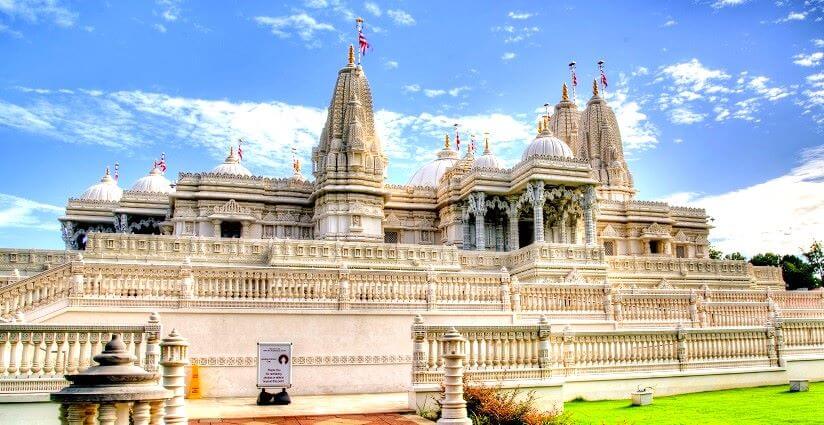
The United Arab Emirates (UAE) is home to a vibrant and growing Jain community, primarily concentrated in Dubai, Abu Dhabi, and Sharjah. The arrival of Jains in the UAE began in the mid-20th century, when Indian merchants and business families—especially from Gujarat and Rajasthan—migrated to the Gulf for trade and entrepreneurial opportunities. Today, the Jain population in the UAE is estimated at around 10,000 to 12,000 people.
Despite being far from India, the community has remained deeply connected to its spiritual roots. The highlight of Jain presence in the UAE is the magnificent Jain Derasar in Jumeirah, Dubai, established by the Shrimad Rajchandra Mission. Built with intricate marble carvings, this temple radiates peace and devotion, attracting followers for daily prayers, meditation, and discourses.
The community actively celebrates major Jain festivals such as Mahavir Jayanti, Paryushan, and Diwali, with spiritual events, lectures, and charity drives that bring devotees together. Organizations like the Jain Sangh of Dubai and Abu Dhabi Jain Group play key roles in fostering unity and preserving religious traditions.
In a cosmopolitan nation that values tolerance and diversity, Jains in the UAE have successfully maintained their faith and culture, exemplifying the core Jain principles of Ahimsa (non-violence), truth, and peaceful coexistence while contributing significantly to the region’s business and social landscape.
Conclusion
Jainism, one of the world’s most ancient religions, has beautifully expanded beyond the borders of India, carrying with it a message of non-violence, truth, and universal harmony. From the bustling cities of New York and London to the serene temples of Tokyo and Nairobi, the Jain community continues to preserve its values while adapting to new cultures and lifestyles.
What makes this global spread truly remarkable is how Jains, no matter where they live, remain deeply connected to their roots—celebrating festivals, building temples, and practicing the principles of Ahimsa (non-violence) and Aparigraha (non-attachment) in everyday life.
As the Jain diaspora grows, it continues to shine as a beacon of peace, compassion, and spiritual discipline, reminding the world that kindness to all living beings is the greatest form of religion.





